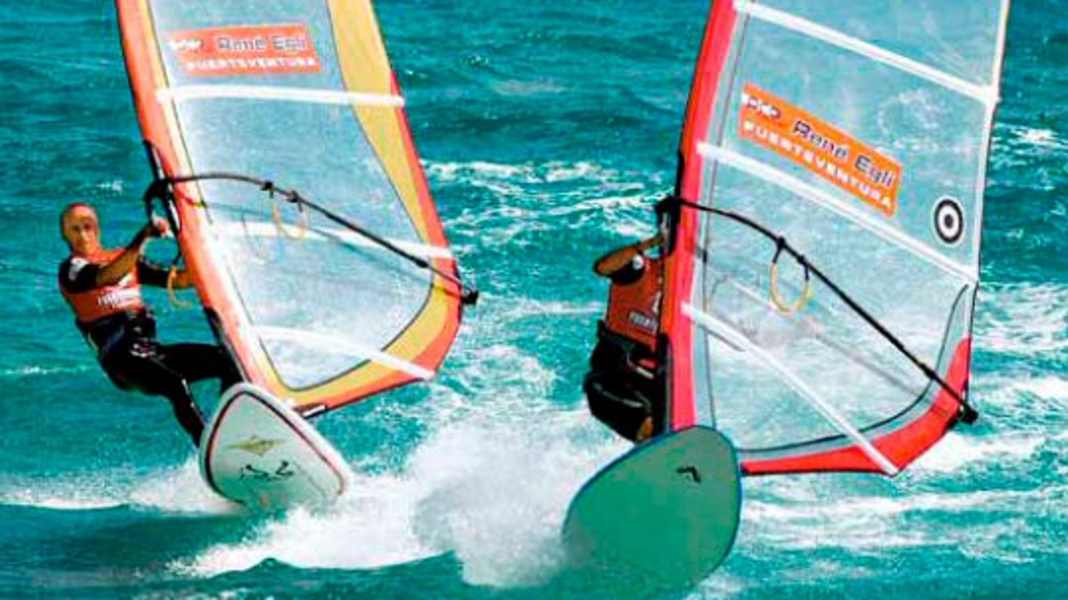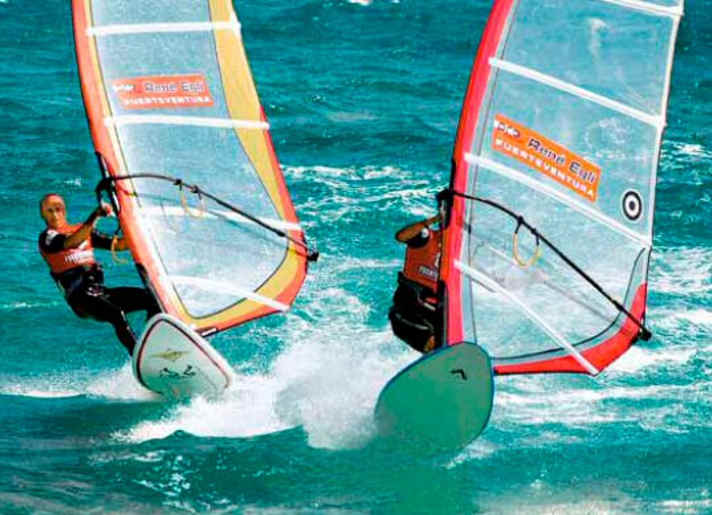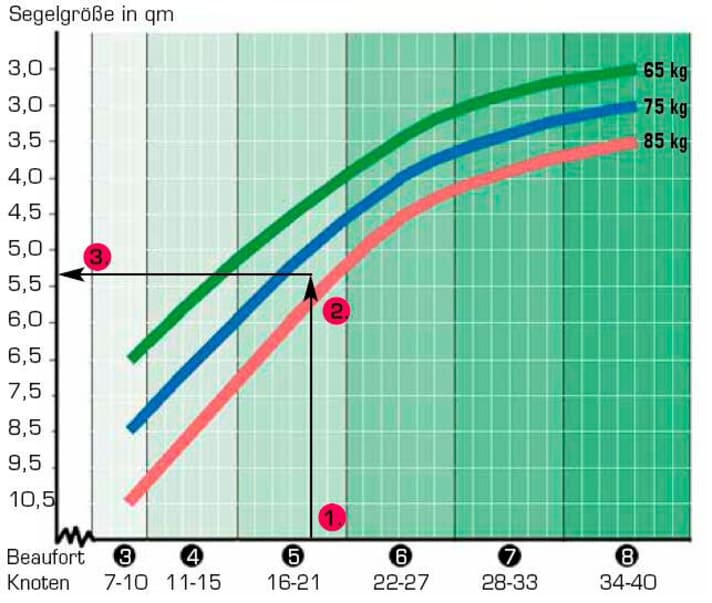Buying a sail: Spoilt for choice


Freeride or freerace sails between the two, the decision is often not easy. Our checklist should ease the agony: Freeride sails are mainly used in sizes over 7.5 square metres. If you can surf safely in the loops even in four to six force winds, want to show your mate who's faster or are even thinking about slalom racing, then only freeride sails come into question. Freeride sails are somewhat more versatile and are usually the better choice in sizes between six and 7.5 square metres. Especially surfers who are perhaps not yet completely confident in harness surfing are well served with the usually lighter rigs. But also very committed freeriders, whose future dreams revolve more around manoeuvres, are exactly right in this group. The border crossers should not be overlooked, as the most powerful freeride sails and the handling cloths from the freerace group overlap in their range of use.
The right sail size
You can find the right sail size in three steps:
1. on the lower axis, find the average wind force at which you want to use the sail.
2. lift up vertically to the coloured line with your body weight.
3 From here, sight horizontally to the left. There you will find the right sail size.
Correction factor: Speed freaks add half a square metre. Racing sails are generally ridden larger - half a square metre to one square metre. Pure manoeuvre surfers choose a sail up to half a square metre smaller.
Perfectly graduated palette:

The gradation of the personal sail palette must be narrower for small sails than for large sails (see example palette). Reason: The force of the wind increases with the square of the wind speed.
Two concepts for slat tensioners:







